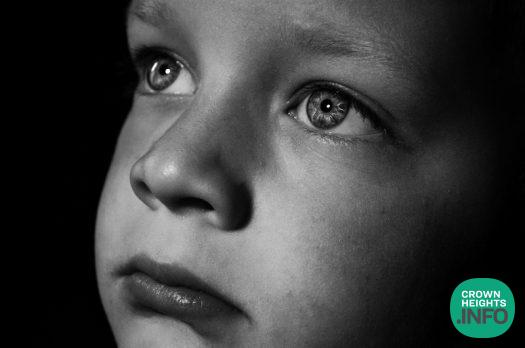
A Lifesaving Look at Teen Bullying in Our Community
by Chana Kaiman, LCSW-RPT – Education & School Relations Lead at the Bereishis Foundation
“I’m fine.”
That’s often what teens say when they’re anything but. Beneath the calm tone and the shrug of indifference, many adolescents are navigating painful social dynamics that adults rarely see. Bullying today is less about overt aggression and more about subtle exclusion; being left out of a chat, ignored in a group, or made to feel invisible.
As one high school student shared with me:
“It’s not that anyone hit me. It’s that I stopped being seen. The laughter that used to include me started to feel like it was about me. After a while, I believed something was wrong with me.”
Her story, though painful, is far from rare.
What Bullying Really Feels Like
For many teens, bullying is not a single event but an ongoing erosion of belonging. It often begins quietly with a group of friends pulling away, a rumor whispered, or a social media post that reminds them they’re on the outside looking in.
Over time, this exclusion can have the same physiological and emotional effects as trauma. The nervous system remains on alert, anticipating rejection. Concentration declines, self-esteem plummets, and isolation deepens.
Some teens begin to experience self-harming thoughts or behaviors, not because they want to die, but because they desperately want the pain to stop. When they feel unseen, even small acts of kindness; a teacher noticing, a friend reaching out, can make the difference between despair and resilience.
What Adults Often Miss
Parents and educators may assume that a well-functioning teen is emotionally stable. But internal distress doesn’t always look dramatic. It gets hidden below the radar and only hints may reveal true pain. A student may continue to achieve, smile, and socialize superficially while privately struggling with anxiety, shame, or self-blame.
As adults, our task is not only to monitor academic performance or attendance but to attune to subtle changes:
- A once-engaged student withdrawing from peers
- Frequent headaches or stomachaches before school
- Sudden irritability or sensitivity
- Disinterest in once-enjoyed activities
These are emotional signals, not behavioral problems.
What Helps Most
Healing begins when a teen feels truly seen. One student described her turning point:
“It wasn’t when my teacher punished the girls who bullied me. It was when she asked me to help organize the classroom before school. She treated me like I belonged.”
Empathy and inclusion are far more effective than punitive responses alone. When adults model calm curiosity by asking, “Tell me what’s been happening” instead of “What did you do?”. That slight shift in tone builds trust.
A Torah Understanding of Dignity
Torah teaches us that every person is created b’tzelem Elokim, in the image of Hashem. To shame another is not merely to harm their feelings but rather it is to disregard their Divine essence. The prohibition of ona’as devarim (hurtful speech) reminds us that words carry spiritual weight.
Chassidus deepens this understanding: the soul’s light is constant, but emotional pain can obscure one’s awareness of that light. When a teen is bullied, they may temporarily be blinded by their own holiness. Our role as adults is to help them rediscover that light and draw them closer through how we speak to them, listen to them, and advocate for them.
The Teacher’s Role
Teachers have a uniquely sacred advantage. They see what parents may not; the group dynamics, the whispered jokes, the child who always ends up partnerless. Their responses can transform a classroom from a place of quiet harm to a space of belonging.
Example 1: A teacher who starts the year by saying, “In this classroom, we honor each other’s dignity,” sets a clear emotional tone.
Example 2: When a teacher notices that one student is always left out and deliberately pairs them with a kind peer, they communicate that everyone has a place.
Example 3: When a teacher corrects misbehavior without humiliation. By addressing the action, not the child, they model kavod habrios (respect for every human being).
These small decisions form the culture of a classroom, shaping how students treat each other and themselves.
For Parents
Parents often ask, “How can I protect my child from bullying?” While we can’t control every peer interaction, we can strengthen our child’s internal sense of worth.
– Teach them that their value is not dependent on others’ approval.
– Validate their experiences, even when uncomfortable to hear.
– Encourage open communication: “You can tell me anything. I can handle it.”
– Partner with teachers early rather than waiting for crises.
When home is a place of emotional safety, children can recover from the wounds of social exclusion far more quickly.
Creating a Culture of Belonging
A Jewish community flourishes when every member feels included, valued, and seen. Ahavas Yisrael is not simply an ideal; it’s a responsibility that extends into our classrooms, homes, and digital spaces.
When adults model kindness, students learn that dignity is non-negotiable. When we teach empathy alongside academics, we strengthen both the heart and the mind.
Bullying loses its power when belonging becomes the norm. And belonging, in the deepest sense, is what Torah life is all about, seeing the spark of holiness in another and reflecting it back with respect, compassion, and love.
About the Author:
Chana Kaiman, LCSW-RPT, is a licensed clinical social worker and registered play therapist specializing in child and adolescent emotional development. She practices child and family therapy in Brooklyn and Hewlett and is a board member of The Bereishis Foundation, an organization dedicated to integrating Torah values with evidence-based psychology to support schools, families, and communities.Chana can be reached at chanakaiman@gmail.com or www.therapyforgrowth.org.













Thank you
Very much needed
Great article ❤️
🙏
Eli
My son was bullied for years and I think this article got it spot on. 🙌❤️
Lamdon
Some of the children who were bullied for years can’t take the pain anymore and end it. The schools that turned a blind eye and allowed it have blood on their hands.
Mushkie
Some yeshivos have a culture of bullying. The hanhola is often very aware of it, as in ******************, but looks away and tolerates it. The older boys bully the younger, the younger bully their classmates, and when the younger become older, it’s their turn to bully the newbies. It has got to stop! And the hanholas are to blame!
Tomim
In mesivta xxx, the “seniors” of Shiyur Gimel treat the juniors of Shiyur Alef like dirt. They push them out of their way in the hall or even on the stairs. A boy was picked up and dumped in the garbage canister. Another was thrown into the mikveh. The menahel’s nephews (the untouchables) walk around with battery-powered electric drills and threaten boys with it. If someone snitches – stitches!
Tomim
Let me explain what happens when a boy gets thrown into the garbage canister – it’s not just the humiliation, it is also physical, being thrown in slimy food, discarded liquids, used tissues, stench and disgust. Clothes are covered in refuse, smelly garbage. When thrown in the mikva – fully clothed, the hat and shoes too, the jacket, the wallet, the humiliation to come out dripping wet. Tolerated!
Local Rov
To Tomim: You must expose such a mesivta and let other parents know to beware of the horrors that go on there. It is not loshon hora but hatzalas nefoshos. To keep such information away from the public’s knowledge is “lo sa’amod al dam rei’echa”. Parents have a right to know, and you are obligated to expose the information! It can save a life, quite literally!
An
Totally agree!
ME
We must realize that Hashem created each person with their unique capabilities. People must respect each other and not negatively affect a persons self esteem. That goes for adults and children, teachers and students. Teachers must realize that not all students can learn the same way. Unfortunately sometimes teachers or classmates make students feel inferior in front of the class.
Kop Doktar
People with very low self-esteem and deep insecurities need to build their own sense of self and ego by knocking down others around them. As cowards, they will pick weaker targets. Adults do it all the time – making fun of authority (e.g. rabbonim), knocking those that do good things (e.g. saying it’s for ulterior motives), and pushing others out of their way (e.g. cutting the line in the store)!
Truth Teller
It would help if Lubavitch news sites tell the truth about what happened so we could have honest discussions about the problems, instead of sweeping them under the rug. You can’t fix a problem that you don’t know exists and that you can’t talk about.
Mushkie
Other sites won’t even touch the topic – their head is deeply in the sand and pretend all is good. Thwy won’t even print a comment that mentions such topics. This is the only site that will cover such topics! Kol hakavod to Crown Heights Info!
Mother in Pain
As a mother of boys in the “system” I can say that I was SHOCKED when my boys started Mesivta. You talk about boys bullying?? I’m talking about HANHALA bullying!! Why should boys not bully when the Menahel/Rosh Yeshiva is the biggest bully? Why is it okay for the Hanhala to bully and get away with it? Why is it just brushed off as “That’s his way of Chinuch”?
Tomim
To Mother, yes, some menahelim are on power trips and “bully” with their authority, which is terrible. But that occasional bullying is nowhere near the 24/7 bullying of cruel fellow students. The mesifta I went to allows it, even laughs it off. A bochur complained that others had urinated on his bed, vandalized his clothes ripped his shirts! And then the bochur suffers by the gang for snitching!!